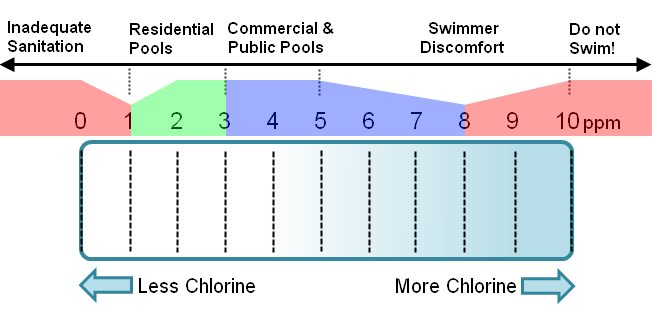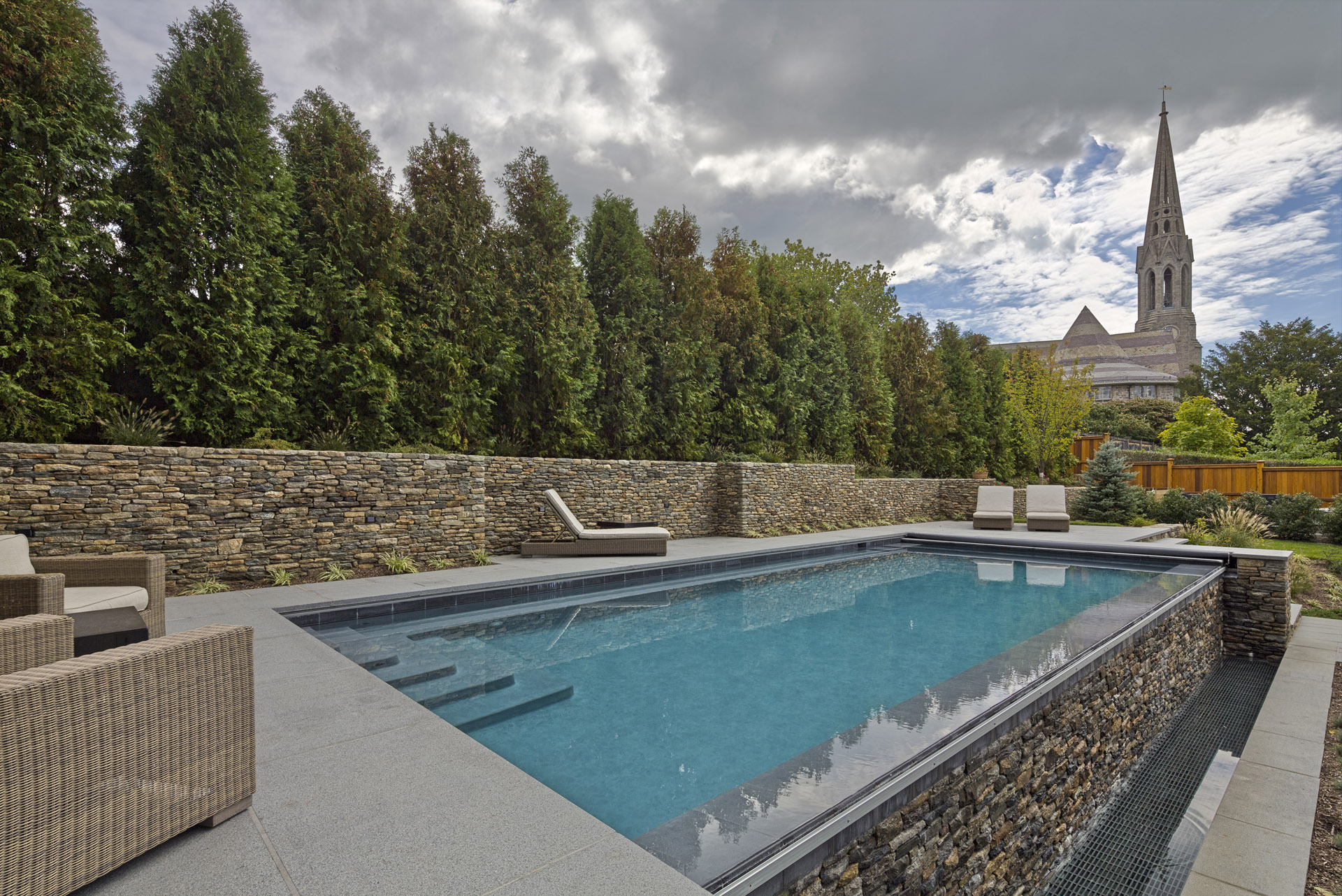free chlorine low after shocking pool
If your total chlorine level is high you will use a non-chlorine shock. Things that cause low free chlorine levels are excessive sunlight high bather loads and improper water chemistry.

Here S How To Break Chlorine Lock In Your Pool Fast
Shock your pool late in the evening or at night when the sun is down to make sure free chlorine will stay in your water longer.

. If total chlorine is higher than free chlorine there are contaminants in the pool. Accordingly why is my free chlorine low. If your total chlorine level is high you will use a non-chlorine shock.
Using a chlorinator is the most widely-used way to raise free chlorine levels in pools. Called Potassium Monopersulfate this is a chemical used when you dont want or need chlorine to shock the pool entirely. You test after Sundown and again before sunrise to find out.
Free Chlorine This is actually the one that works in sanitizing the pool. Best Time To Shock A Pool To Raise Free Chlorine You cannot shock a pool now and then. All you need to do is to refill the chlorinator feeder with jumbo tablets.
0 ppm for a stabilized pool. Always test your water before swimming again to make sure your chlorine levels are safe. The Pool and Hot Tub Alliance recommends keeping free chlorine levels between 20 and 40 parts per million ppm.
We typically see more pools with a high demand for chlorine during spring opening season. Ultraviolet UV rays from direct sunlight greatly reduces free chlorine levels so shocking during the day will not be very effective. That means that oxidation levels have increased to a point where chlorine is being consumed faster than it can be put in to the water by either shocking or normal applications.
Like organics in the pool. We recommend using a non-chlorine oxidizing shock until your free and total chlorine reads the same. By chemical calculation chemists know that it takes 76 parts of chlorine to oxidize 1 part of ammonia.
Shock Your Pool. If your total chlorine level is high you will use a non-chlorine shock. Things that cause low free chlorine levels are excessive sunlight high bather loads and improper water chemistry.
Or when the chlorine level doesnt remain stable for more than a couple of days. As a rule you will need to raise free chlorine to 10 times your combined chlorine to hit what is known as break point Therefore it is good to deal with combined chlorine while it is still small. If it is low you will use a chlorinated shock.
Its the active chlorine that kills bacteria algae and other harmful things around the pool. This will break down the inactive Combined Chlorine in the water. Run the pool filter for 8 hours 24 hours for a cloudy pool.
Free chlorine is the most important type of chlorine to monitor because it is responsible for actively sanitizing your pool. Chlorine free shock has a neutral pH and will not affect any of your pool chemical levels. Generally after shocking your pool you should wait to swim at least 8-12 hours until chlorine levels come back to normal 1-3ppm.
If it is low you will use a chlorinated shock. As a rule you will need to raise free chlorine to 10 times your combined chlorine to hit what is known as break point. Even acid rain and other biomatter getting into your pool will cause free chlorine levels to drop.
If it is low you will use a chlorinated shock. Shock your pool when the Free Chlorine FC is low and Combined Chlorine CC is high to raise the FC level to at least 10 ppm. Contamination low pH or low chlorine stabiliser levels could cause this situation.
If combined chlorine is. Pool Care Water Chemistry. The third kind of granular shock is chlorine-free.
I have a 18 foot round pool and I seem to be having chlorine demand I test the water and I get no chlorine reading I took a sample to a local pool store and they said my total chlorine was at around a 3 and my free was at 0 my ph and alkalinity reading are fine my cya is a little high at 80 but it read that last year and didnt have this problem I added powder chlorine. Then place the chlorinator back into the pool and the pool is ready to be used again. After shocking your pool you should allow the filter to run for about 6 to 24 hours depending on the chlorine level after the shock treatment.
Continued low readings when salt levels and chlorinator runtime are adequate could mean that the pump isnt circulating water properly or that the generator cells are coated with scale or simply worn out. If your Total Available Chlorine level is 03 ppm or higher above your Free Available Chlorine level its time to shock the pool. As a rule you will need to raise free chlorine to 10 times your combined chlorine to hit what is known as break point Therefore it is good to deal with combined chlorine while it is still small.
The following simple steps should be performed when a pool has been shocked but the chlorine level never rises. Not all day over the course of 24 hours. As a rule you will need to raise free chlorine to 10 times your combined chlorine to hit what is known as break point Therefore it is good to deal with combined chlorine while it is still small.
First you will need to test your cyanuric acid level. Any chlorine added after this point will form free chlorine 5 because there is no ammonia to react with the chlorine now being added. If your total chlorine level is high you will use a non-chlorine shock.
Make sure Free Available Chlorine levels stay within the ideal range of 20-40 ppm at all times. The water might appear cloudy the pool walls be slimy or the pool may look relatively OK. Our shock procedure is sustained until all those criteria you read about are met.
The word free refers to the purity of the chlorine itself which hasnt been combined with the contaminants. If it is low you will use a chlorinated shock. Therefore it is good to deal with combined chlorine while it is still small.
How often should you put chlorine in a small pool. InTheSwim recommends 20 to 3. Bring your chlorine levels to 20ppm or three times higher than the current levels.
The over night loss of 10 is to see if something besides the Sun is getting your free chlorine. Another method of breaking chlorine lock is shocking your pool. Next add a pool conditioner until reaching the ideal range 30-50PPM.
Then add a Shock Oxidizer to break up the Combined Chlorine. While it lacks chlorines power it doesnt impact the waters pH and alkaline levels as much and can make the water safe for swimming in under 15 minutes. Not having enough chlorine in your swimming pool will also cause the little bit of chlorine thats in there to be used up faster too.
This is one of the few times that having a high chlorine level is a good thing. Combined Chlorine As the name suggests this type of chlorine has been combined with. Subtract the free chlorine measurement from the total chlorine measurement to calculate the amount of combined chlorine total free combined.
You can eliminate adverse effects of low chlorine--including chlorine odors cloudy water and algae growth--by shocking the pool.

How To Reduce Pool Or Spa Chlorine Levels Intheswim Pool Blog

How Long After Shocking A Pool Is It Safe To Swim Health Com

What Is Free Chlorine Combined Chlorine And Total Chlorine Pool Calculator

When To Use A Chlorine Free Shock Oxi Chlorine Free Shock Oxidizer Clorox Pool Spa Youtube

A How To Guide 7 Tips To Lower Chlorine Levels In Your Pool

A How To Guide 7 Tips To Lower Chlorine Levels In Your Pool

How To Raise Free Chlorine In Pool Some Helpful Suggestions

Raising Swimming Pool Chlorine

The Benefits Of Non Chlorine Shock
How Often Should I Shock My Pool In The Swim

Why Does My Pool Have No Chlorine Reading After Adding Chlorine

Can Too Much Chlorine Make Pool Water Cloudy

Free Chlorine Vs Combined Chlorine Shoreline Pools

7 Causes Of Chlorine Loss In Swimming Pools How To Prevent It

What To Do If Total Chlorine Is Higher Than Free Chlorine Hot Tubs And Swimming Pool

No Chlorine In Pool After Adding Clorine Youtube
Fixing Free Chlorine Level Fcl Problems In Saltwater Swimming Pools Thesummerpools Com

